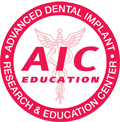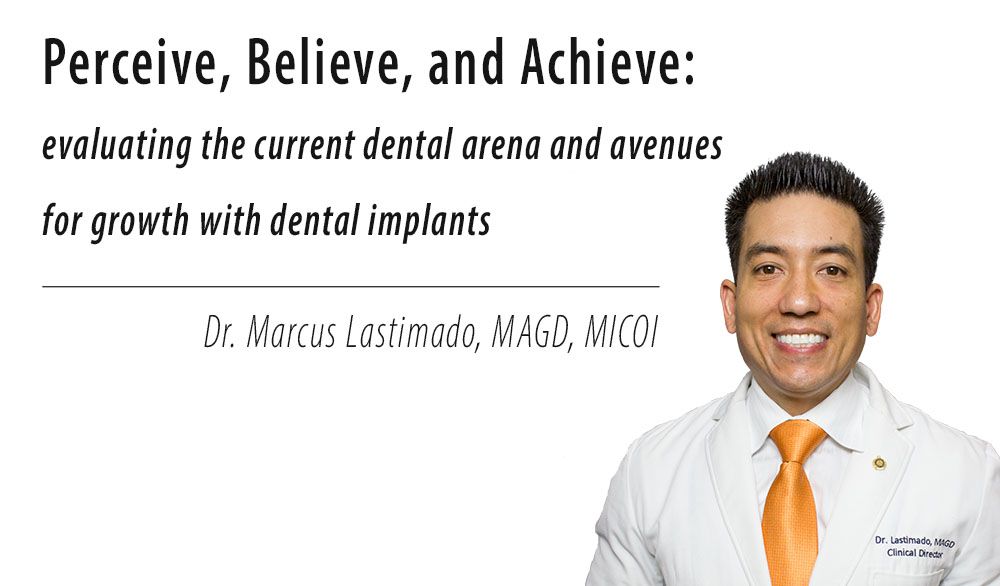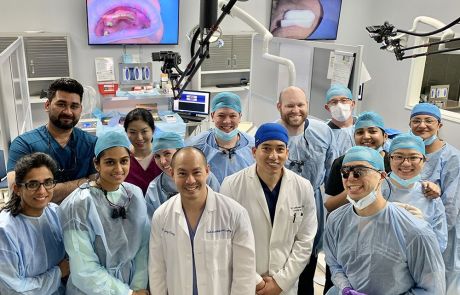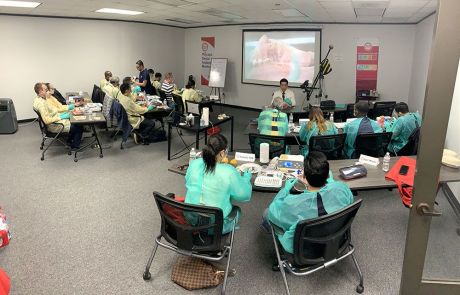In an insurance driven, competitive world, general dentists today face more adversities than ever before. With practicing in the current environment, to more dentists graduating each year, to increasing student loan debt with no end in sight. All of this can bring a sense of market saturation and anxiety.

As of March 2019, there are currently 188,209 professionally active dentists in the United States. [1]
Supported by the American Dental Association and the American Academy of Implant Dentistry, a report predicted that by the year 2021, the growth of dental implants would go from 20% to over 70%. In addition, that 56% of the total amount of single implant placements will be done by general clinicians. [2]
It is this author’s opinion that of this writing the dental community hasn’t quite hit that number just yet. This, of course, could be multifactorial. Dentists may not have had proper training in surgical courses, to a lack of general surgical confidence, and or be due to the fact that70% of the world’s lawyers live in the United States (900,000). [3]
Does this mean that there is a bleak future for dentistry for seasoned and new dentists alike? Should we all pack up our dental bags, handpieces and call it quits? Having graduated in 2007 and a life-long learner myself; I think not.
[1] Henry Kaiser Family Foundation. www.KFF.org/other/state-indicator/total-dentists [2] DiMatteo, BA, MPS &Latanyshyn, BA, MLS. Guide to Implant Dentistry. April 2014 Vol. 10, Issue 14 [3] Rensselaer University. Lawyers: An American Epidemic https://homepages.rpi.edu/~verwyc/Chap4law.htm
Whether owner or associate, one must look at the larger picture and foreseeable future and how that economically will impact you in a positive or negative way. For myself during my training in the United States Army, I quickly appreciated the need to have the mindset of having multiple “tools in my tool shed”.
Enjoying and yes sometimes in our busy world, forcing myself to learn and become knowledgeable. From this knowledge, the task was to then become confident, and proficient in different procedures in dentistry; to include dental implant therapy.
In my career so far, with the housing market crash in 2007-2008, and now in 2020 with COVID-19, I have learned three staples. If one continues to learn, treat patients how you would like to be treated, know when to spend and not spend, you are generally more adept. Specifically, more adept with moving forward with the flow of the dental and larger economic downturns.
The American Academy of Prosthodontists stated that approximately 36 million Americans do not have any teeth, and 120 million people in the U.S. are missing at least one tooth. These numbers according to the ACP are expected to grow. According to the ACP, these numbers will reach more than 200 million people in the next 15 years. To date, 2.3 million implant crowns are made each year!
Given this unprecedented environment, how are you going to prepare? Prepare in the sense that when the green light hits-to kick back into high gear and catch up with all the dental backlog. It is this “dental backlog” which can result in new economic growth for one’s practice. As the old saying goes, “a forest cannot grow to its full potential without a little forest fire.”
Given this information how can one gain the confidence to predictably and successfully take care of patients’ needs? Specifically, in the current world of general clinicians needing to provide comprehensive care. Many times, this care is to improve masticatory function, esthetics, or both, of edentulous areas of the mouth with dental implants.
It is this author’s opinion that the only way to acquire or even reprogram one’s clinical skill set is to take a real-world practical implant surgical training course. Specifically, this program must be comprehensive and cover every detail from A to Z.
In addition, it must have live patient implant surgeries, where you place the dental implants. It should cover business financial aspects as well as clinical surgical techniques and how to immediately apply them, for a doctor’s true success. In addition, this course should leave the new or reprogrammed dental implantologist with a set of systems (cheat sheets) that the doctor can easily utilize to flatten the curve, rather than be even more confused.
Since 2013, having personally trained close to 700 doctors with live surgery; this program does exist. This program exists as the AIC Education Master Course.
The AIC Education Master Course is divided into three main sections, each taking eight to nine days with daily hands-on exercises and live patient surgery. These main sections are the Master Program, Master Surgery, and Master Prosthodontics. These sections are taught by the most highly skilled master clinicians and specialists. It truly is at the forefront of today’s dental implant surgical educational programs.
This program is available in most every major United States city and around the world. From business logistics and marketing to learning guided bone regeneration, immediate implant therapy, guided implant surgery, sinus augmentation, to A to Z implant prosthodontics; it is comprehensive. In a step by step fashion, this program and support after the program is designed to ensure a doctor’s success with dental implant therapy.
Over the many years, seeing graduates of our AIC education programs preserver and succeed in their dental practices is one of the greatest rewards for an educator. As the educator, Jaime Escalante famously said, “You can do it!”
The question is: “When will you, doctor?”



